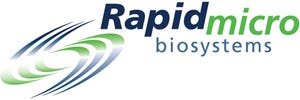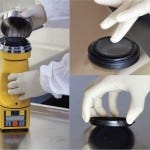Voices of Biotech
Podcast: MilliporeSigma says education vital to creating unbreakable chain for sustainability
MilliporeSigma discusses the importance of people, education, and the benefits of embracing discomfort to bolster sustainability efforts.
August 15, 2014
 Environmental monitoring of clean rooms is an integral part of a pharmaceutical company’s quality control testing program. Analyzing the air, surface, and personnel within cleanrooms helps ensure the manufacturing environment meets mandated standards and that any variations can be addressed. Unfortunately, the traditional method for environmental monitoring is manual, inefficient, and time consuming. Laboratory technicians must travel, sometimes across large campuses, to collect samples in manufacturing suites. Technicians have to gown, take the samples, and travel back across the campus to the lab where samples are logged in before incubation.
Environmental monitoring of clean rooms is an integral part of a pharmaceutical company’s quality control testing program. Analyzing the air, surface, and personnel within cleanrooms helps ensure the manufacturing environment meets mandated standards and that any variations can be addressed. Unfortunately, the traditional method for environmental monitoring is manual, inefficient, and time consuming. Laboratory technicians must travel, sometimes across large campuses, to collect samples in manufacturing suites. Technicians have to gown, take the samples, and travel back across the campus to the lab where samples are logged in before incubation.  After 5–7 days, the samples are removed, and each plate is manually counted. Technicians then record the counts for each plate. Paper results are keyed into a laboratory information system (LIMS). For large sites, environmental monitoring programs involve hundreds of samples being tested each day, taking time and resources that could be used for higher value activities. Because the current process is manual, potential errors can occur during the reading of samples or keying of samples as well as the capturing of the correct number of samples. Such errors can lead to costly and time-consuming investigations.
After 5–7 days, the samples are removed, and each plate is manually counted. Technicians then record the counts for each plate. Paper results are keyed into a laboratory information system (LIMS). For large sites, environmental monitoring programs involve hundreds of samples being tested each day, taking time and resources that could be used for higher value activities. Because the current process is manual, potential errors can occur during the reading of samples or keying of samples as well as the capturing of the correct number of samples. Such errors can lead to costly and time-consuming investigations.
With the introduction of the Growth Direct™ system for environmental monitoring, pharmaceutical companies can automate the detection, enumeration, and reporting steps in the microbial quality control testing process. Once samples are loaded into the system, incubation, enumeration, and reporting of colony counts in CFUs is performed automatically. Microbiologists are alerted in real time to any samples that are out of specification. Because the Growth Direct™ system is self-contained, with built-in incubators, the instrument can be placed closer to a manufacturing area. The intuitive user interface and automated features make it feasible for samples to be loaded by manufacturing technicians instead of microbiologists. Robust reporting and integration into LIMS makes data analysis such as trending much less complex.
 With the Growth Direct™ system placed near manufacturing, technicians can take samples and load them directly into the system. The technology then takes over managing the rest of the process. This frees the microbiology team to work on other projects that can be more valuable to the overall business.
With the Growth Direct™ system placed near manufacturing, technicians can take samples and load them directly into the system. The technology then takes over managing the rest of the process. This frees the microbiology team to work on other projects that can be more valuable to the overall business.
The Growth Direct™ system offers significant benefits to pharmaceutical manufacturers by automating, providing an audit trail, and accelerating environmental monitoring tests. The ability to place the instrument closer to manufacturing and potentially train manufacturing technicians to load the instrument adds additional efficiency to a business.
Julie Sperry is chief commercial officer at Rapid Micro Biosystems, 1-781-271-1444, www.rapidicrobio.com.
You May Also Like